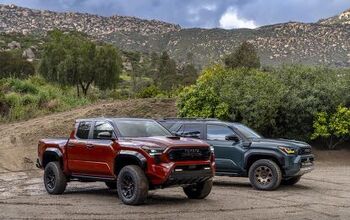Shell’s V-Power NITRO+ Fuel is for the Racer in All of Us

Today, Shell announced the arrival of its latest performance fuel to Canadian Shell stations. It’s called V-Power NITRO+ and according to Shell, it’s been quite the labour of love to get it to market. It’s a fuel that’s been designed to work specifically with gasoline-direct engines (GDI) and that has its challenges.
“We focused on GDI engines because GDI engines are much better than ported engines in terms of providing the ability for the fuel to operate more efficiently,” said Dr. Selda Gunsel, chief technology officer and executive vice president of technology at Shell. “It improves combustion efficiency, lowers emissions and improves fuel economy.”
She says that with ported engines, you can remove intake valves, for example, and examine them for buildup, deposits and so forth. That makes researching and eventually engineering what additives are required for fuel efficiency that much easier. “In GDI engines,” Gunsel says, “it’s very difficult to go into these tiny little holes and measure deposits. We had to actually innovate measuring technologies to be able to measure deposits (in GDI engines).”
The result was a five-year development period to get this fuel designed and engineered to the point that it could perform how Shell wanted it to but in the process, they have invented measurement techniques that have become the industry standard.
It’s imperative that they do so because according to Shell, 70 per cent of new cars sold today worldwide run on GDI systems. That means the need to have new chemical mixture required to function in a GDI engine has to also meet the stringent homologation demands of countries across the world.
Shell, though, has a secret ingredient to give them the best chance of hitting all those targets and it has nothing to to with chemicals, but with the famed Italian car brand we all know and (probably) love: Ferrari.
Since the first Ferrari road car – a 125 S roadster -- rolled off the line in Maranello in 1947 topped up with Shell fuel, every Ferrari that comes off the line has had the same treatment. According to Gunsel, Ferrari has been an instrumental partner when it comes to developing both their road and race fuels. Further to that, she says Ferrari’s requirements are stringent to the point that if it passes muster in a Ferrari engine, it will do so anywhere, in any car or market the world over.
Speaking of Ferrari; you may not realize this, but they run a pretty storied Formula 1 team as well and wouldn’t’ you know it, the race cars are powered by Shell as well. Not only that, but aside from a 102 octane rating (consumer-level V-Power NITRO+ is rated for either 91 or 93 octane), Gunsel assures us that “the (fuel’s) components and chemistry are the same. What’s different are the ratios you use in the formulation.” It’s additives like friction modifiers, anti-wear agents and corrosion inhibitors that might change. 99 per cent of the compounds used, however, are the same.
In addition to the knowledge learned from developing fuels to meet Ferrari’s road car requirements, according to Gunsel, the stresses put on the fuels by an F1 car provide valuable learning opportunities as well. As does cold-weather testing, which is of particular interest to Canadian and Norther United States consumers, and the stresses put on a fuel by -40-degree Celsius temperatures will reveal almost as much about the fuel as racing does. “Canada is like a motorsport application,” said Gunsel.
That testing, meanwhile, is just one of the steps in a exhaustive testing process that includes lab testing, single-cylinder engine testing, on-road fuel trials and more.
If all of this attention paid to stuff like reducing corrosion in GDI engines and perfecting additive formulas seems trivial to consumers, that simply isn’t the case.
“We have a wide customer base across a number of segments,” said Barbara Stoyko, senior vice president of Shell mobility of the Americas. “There are some that we call ‘a quality believer or a car enthusiast that are really interested in preserving the life of their engine and maximizing performance.”
Look for the latest V-Power NITRO+ fuel at all of Shell’s stations – almost 1,400 of them – Canada-wide.
Become an AutoGuide insider. Get the latest from the automotive world first by subscribing to our newsletter here.

Dan has spent his whole life surrounded by all things automotive. From volumes of car magazines and books, to boxes of Hot Wheels, he was/is never far away from something four-wheeled and fun. He studied journalism at Centennial College in Toronto and is a board member at the Automobile Journalists Association of Canada.
More by Dan Heyman


































Comments
Join the conversation
My car has both port and direct injection.